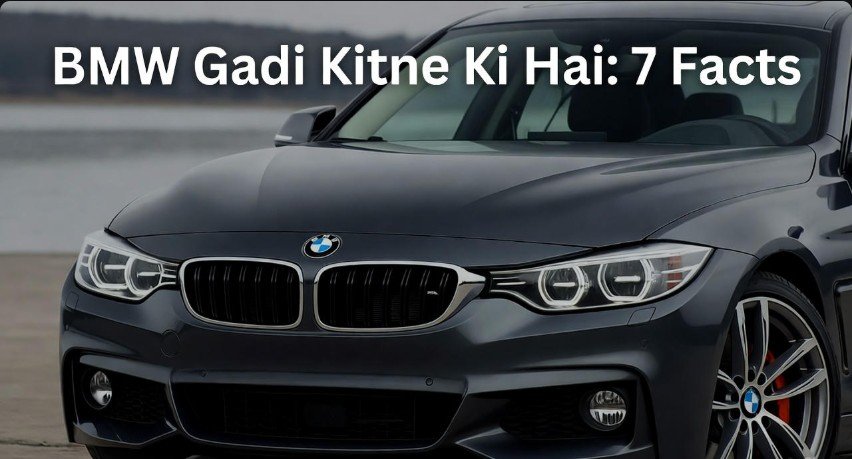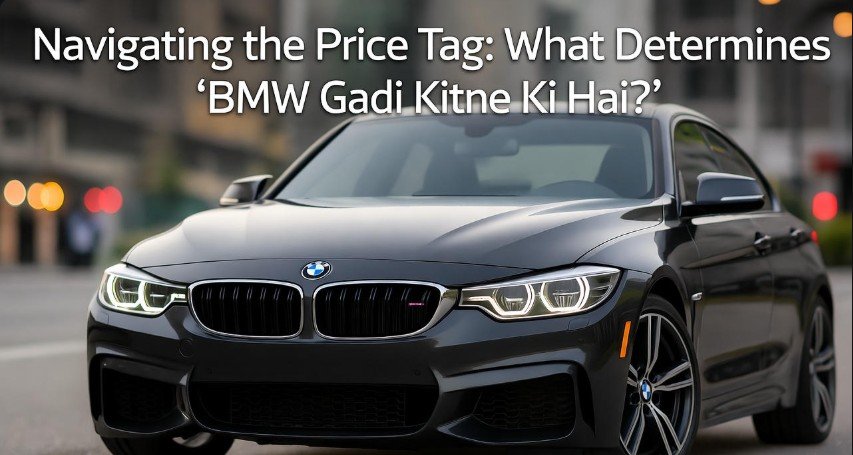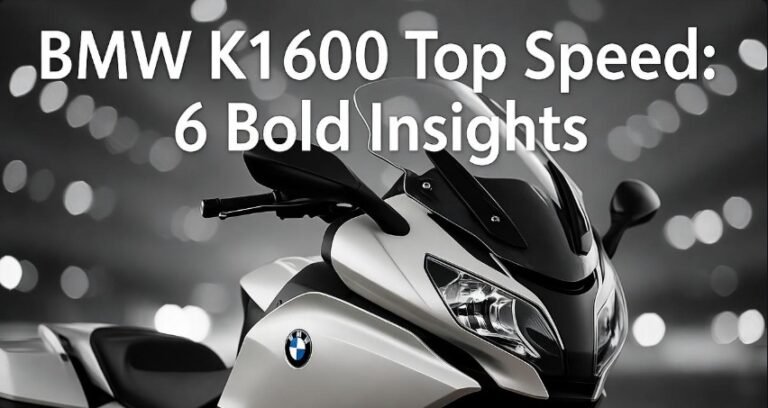BMW Gadi Kitne Ki Hai: 7 Facts

BMW Gadi Kitne Ki Hai: 7 Bold Facts You Must Know – Direct Answer for USA Buyers
BMW Gadi Kitne Ki Hai: 7 Bold Facts You Must Know
The price of a BMW car (BMW Gadi Kitne Ki Hai) in the USA varies significantly based on the model, year, condition, and features. Expect a wide range, from around $40,000 for entry-level used models to well over $100,000 for new, high-performance variants. This guide breaks down the key factors influencing BMW pricing.
Key Takeaways
- Understand BMW pricing variability by model and year.
- Explore new vs. used BMW costs in the USA.
- Discover how features impact your BMW’s price.
- Learn about financing and long-term ownership costs.
- Factor in insurance and maintenance for your BMW.
- Explore Certified Pre-Owned (CPO) BMW options.
- Identify top BMW models and their typical price ranges.
Navigating the Price Tag: What Determines “BMW Gadi Kitne Ki Hai?”

If you’ve ever been captivated by the sleek lines and legendary performance of a BMW, you’ve likely wondered, “BMW Gadi kitne ki hai?” This question is more complex than it seems, as the German luxury marque offers a vast spectrum of vehicles. In the USA, BMWs are synonymous with driving pleasure, advanced technology, and a premium ownership experience. However, this prestige comes with a price tag that can seem daunting.
Understanding the factors that influence BMW car prices is crucial, whether you’re a first-time luxury car buyer, an expat adjusting to the US automotive landscape, or simply an enthusiast. This comprehensive guide will demystify the cost of owning a BMW in America, covering everything from initial purchase price to long-term expenses. We’ll break down the specifics to ensure you feel confident and well-informed about your potential BMW investment. Let’s dive into the seven key facts that shape the answer to “BMW Gadi Kitne Ki Hai?”
Fact 1: Model & Series – The Foundation of BMW Pricing
The most significant factor influencing the price of a BMW (BMW Gadi Kitne Ki Hai) is its core model or series. BMW categorizes its vehicles into distinct series, each offering a different size, performance level, and luxury quotient. This hierarchy directly translates into pricing.
The entry-level models, such as the BMW 1 Series and 2 Series, generally have the lowest starting prices. These compact sedans and coupes are designed to offer a taste of BMW’s driving dynamics at a more accessible price point.
Moving up, the BMW 3 Series and 4 Series represent the heart of BMW’s lineup. The 3 Series sedan is a benchmark for sports sedans, while the 4 Series offers coupe, convertible, and Gran Coupe variants with sportier styling. Their pricing reflects their enhanced features and performance over the smaller series.
The BMW 5 Series and 6 Series step into the executive and luxury segments. These mid-size and larger sedans and coupes are equipped with more advanced technology, premium materials, and greater comfort, commanding higher prices.
At the pinnacle of the BMW range are the 7 Series (flagship luxury sedan), 8 Series (premium grand tourer), and their X Series SUVs (from the compact X1 to the full-size X7). The M performance division vehicles, such as the M3, M5, and X5 M, represent the highest performance and, consequently, the highest price points within their respective series.
Typical BMW Series Price Ranges (New – Approximate MSRP in USD)
| BMW Series | Vehicle Type | Approximate Starting MSRP (USD) |
| :————— | :—————— | :—————————— |
| 1 Series | Compact Hatchback | $36,000 – $40,000 |
| 2 Series | Compact Coupe/Gran Coupe | $40,000 – $48,000 |
| 3 Series | Sports Sedan | $45,000 – $60,000 |
| 4 Series | Coupe/Convertible/Gran Coupe | $50,000 – $70,000 |
| 5 Series | Executive Sedan | $58,000 – $80,000 |
| 6 Series | Gran Turismo | $70,000 – $90,000 |
| 7 Series | Luxury Sedan | $90,000 – $120,000+ |
| 8 Series | Luxury Coupe/Convertible | $88,000 – $110,000+ |
| X1 | Compact SUV | $40,000 – $46,000 |
| X2 | Compact SUV | $42,000 – $48,000 |
| X3 | Compact Luxury SUV | $47,000 – $60,000 |
| X4 | Compact Luxury SUV | $52,000 – $65,000 |
| X5 | Mid-Size Luxury SUV | $65,000 – $85,000 |
| X6 | Mid-Size Luxury SUV | $70,000 – $90,000 |
| X7 | Full-Size Luxury SUV| $80,000 – $100,000+ |
| M Models | Performance Variants| $70,000 – $150,000+ |
Note: These are approximate MSRPs for new models in the USA and can vary based on options and current market conditions.
Fact 2: New vs. Used BMW – The Depreciation Factor
When asking “BMW Gadi Kitne Ki Hai?”, you’ll find a stark difference between the price of a brand-new vehicle and a pre-owned one. Depreciation is a significant factor in the automotive market, and luxury cars like BMWs experience a noticeable dip in value during their first few years.
A new BMW offers that sought-after “new car smell,” the latest technology, and a full factory warranty. However, you pay a premium for these privileges. The moment a new car is driven off the lot, its value depreciates. For models like the 3 Series or X5, this can mean losing 10-15% of its value in the first year alone.
Used BMWs, on the other hand, offer a more accessible entry point into the brand. A 3-5-year-old BMW can be purchased for a fraction of its original sticker price. The trade-off is limited or no remaining factory warranty, potentially higher mileage, and the absence of the very latest technological features. However, if well-maintained, a slightly older BMW can still provide an exceptional driving experience.
Depreciation Snapshot (Illustrative Example for a $60,000 New BMW):
| Age | Estimated Value (USD) | Percentage of Original Value |
| :—— | :——————– | :————————— |
| New | $60,000 | 100% |
| 1 Year | $51,000 – $54,000 | 85% – 90% |
| 3 Years | $40,000 – $45,000 | 67% – 75% |
| 5 Years | $30,000 – $35,000 | 50% – 58% |
Note: This is a generalized example. Actual depreciation depends heavily on the specific model, mileage, condition, and market demand.
Fact 3: Trim Levels and Optional Features – Customizing Your Cost
Beyond the base model, BMW offers various trim levels and a vast array of optional features that significantly impact the final price. Understanding these can help you tailor a BMW to your budget and preferences.
Base models come with essential features, but BMW’s appeal often lies in its advanced technology, superior comfort, and enhanced performance packages. Common options that add to the “BMW Gadi Kitne Ki Hai?” calculation include:
Engine Upgrades: Opting for a more powerful engine (e.g., a V6 or V8 over a 4-cylinder) will increase the price.
M Sport Package: This popular package often includes sportier suspension, aerodynamic body styling, upgraded brakes, and sport seats, adding several thousand dollars.
Technology Packages: Features like advanced navigation systems, head-up displays, premium audio systems (e.g., Harman Kardon or Bowers & Wilkins), and driver-assistance suites can add substantially.
Luxury Seating Options: Upgraded leather upholstery, multi-contour seats, heated/ventilated seats, and massage functions are premium additions.
Larger Wheels and Tires: Bigger wheels often come with better performance tires but also increase cost.
Paint and Interior Trim: Special metallic paint finishes and unique interior trims (like carbon fiber or exotic wood) are extra.
For example, a base BMW 330i might start around $45,000. However, adding the M Sport package, a premium sound system, advanced driver assistance, and upgraded leather could easily push the price to $55,000 or more.
Pro Tips
Maximize Value on Used BMWs
When buying a used BMW, prioritize models that already have desirable packages installed. You’ll often pay less for a well-equipped used car than you would for a base model new car with those same options added later.
Fact 4: Certified Pre-Owned (CPO) Programs – A Balanced Approach
For those seeking a BMW at a reduced price but still with peace of mind, BMW’s Certified Pre-Owned (CPO) program is a compelling option. This offers a middle ground between buying new and buying a standard used car.
A CPO BMW is a pre-owned vehicle that has undergone a rigorous inspection by certified technicians and meets BMW’s strict standards. These cars are typically low-mileage and relatively new. The primary benefit of a CPO BMW is the extended warranty it comes with. For instance, BMW offers a 1-year/unlimited-mile CPO Limited Warranty after the original 4-year/50,000-mile New Vehicle Limited Warranty expires.
This program offers a significant advantage: you get a car that drives like new, with the added reassurance of a comprehensive warranty, at a used car price, often only slightly higher than a non-CPO equivalent but significantly lower than new. This can be an excellent way to answer “BMW Gadi Kitne Ki Hai?” with a confident, smart purchase.
Fact 5: Financing and Interest Rates – The True Cost of Ownership
The sticker price is only part of the story when determining “BMW Gadi Kitne Ki Hai?”. If you’re financing your purchase, the loan terms, interest rate, and loan duration play a crucial role in the total amount you’ll pay over time.
In the USA, auto loan interest rates can vary based on your credit score, the lender, and prevailing economic conditions. A higher credit score generally secures a lower interest rate, meaning you’ll pay less in interest over the life of the loan.
Consider this: two buyers purchase the same $50,000 BMW.
Buyer A has excellent credit and gets a 4.0% APR for 60 months. Their monthly payment would be around $920.80, and they’d pay about $5,248 in interest.
Buyer B has average credit and gets a 7.0% APR for 60 months. Their monthly payment would be around $975.37, and they’d pay about $8,522 in interest.
The difference of $3,274 in interest over five years can be substantial. Therefore, shopping around for the best financing options and improving your credit score before purchasing can significantly reduce the overall cost of your BMW. You can explore options through BMW Financial Services or compare rates from national banks, credit unions, and online lenders.
Fact 6: Insurance and Maintenance Costs – Long-Term Considerations
Owning a luxury vehicle like a BMW involves ongoing costs beyond the initial purchase price. Insurance premiums and maintenance expenses are critical components that contribute to the total cost of ownership and should be factored into your “BMW Gadi Kitne Ki Hai?” equation.
Auto Insurance: BMWs are often more expensive to insure than non-luxury or economy vehicles. This is due to several factors:
Higher Repair Costs: Parts and labor for BMWs are typically more expensive.
Performance Capabilities: Faster, more powerful cars can be perceived as higher risk.
Theft Rates: While varies by model, some luxury vehicles can be targets.
Value of the Vehicle: Insurers base premiums on the car’s value.
It’s wise to get insurance quotes before you buy. Premiums can vary significantly between insurers and depend on your driving record, location, age, and coverage levels. For example, insuring a new BMW M5 will be considerably more expensive than insuring a used BMW X1. According to industry data, the average BMW insurance cost can range from $1,500 to over $3,000 annually in the USA, depending on these factors.
Maintenance: BMWs are known for their engineering excellence, but they require scheduled maintenance to keep them running optimally. This includes:
Routine Servicing: Oil changes, filter replacements, and fluid checks.
Brake Services: Pads, rotors, and fluid.
Tire Rotations and Replacements: Premium tires can be costly.
Scheduled Inspections: Checking various systems as per BMW’s recommendations.
Some newer BMW models come with a complimentary maintenance program for the first few years or a certain mileage (e.g., 3 years/36,000 miles in the US), which can significantly offset these costs initially. However, after this period, you can expect to pay more for maintenance compared to an average car. Budgeting between $500 to $1,000+ per year for regular maintenance is a reasonable estimate, with unexpected repairs potentially adding to this.
You can find more information on BMW’s maintenance schedules and services on their official website, such as BMW USA’s Service & Parts section.
Fact 7: The BMW Experience – Value Beyond the Price Tag
While the monetary cost is essential, understanding “BMW Gadi Kitne Ki Hai?” also involves appreciating the intangible value and the overall experience of owning a BMW. This is where luxury automotive brands differentiate themselves.
BMW vehicles are engineered for a unique driving experience, often referred to as “The Ultimate Driving Machine.” This encompasses:
Performance and Handling: Precise steering, balanced chassis, and responsive powertrains that enthusiasts adore.
Advanced Technology: Innovative infotainment systems (iDrive), sophisticated driver-assistance features, and cutting-edge connectivity.
Premium Interior: High-quality materials, ergonomic design, and exceptional comfort.
Brand Prestige: BMW carries a global reputation for engineering excellence and luxury.
* Community and Lifestyle: Owning a BMW can connect you to a community of like-minded individuals and a certain lifestyle.
The price you pay for a BMW is not just for the metal, plastic, and electronics; it’s for the meticulous engineering, the driving pleasure, the advanced safety, and the premium ownership experience that distinguishes BMW in the competitive luxury automotive market. For many owners, this experience justifies the investment.
Frequently Asked Questions (FAQs)
Q1: What is the cheapest BMW car you can buy in the USA?
The least expensive BMW models typically are the 1 Series hatchback (though less common in the US market) and the 2 Series Coupe or Gran Coupe. For SUVs, the X1 is usually the most affordable entry point. Prices for new models generally start in the low to mid-$40,000s.
Q2: Are BMW cars expensive to maintain in the USA?
Yes, BMWs are generally more expensive to maintain than non-luxury vehicles. Parts and labor costs are higher, and specific maintenance items can be more complex. However, many new BMWs come with complimentary scheduled maintenance for the first few years, which helps offset costs during that period.
Q3: How much does it cost to insure a BMW in the USA?
Insurance costs for a BMW can vary widely, but expect it to be higher than for a standard car. Annual premiums in the USA can range from around $1,500 to over $3,000, depending on the model, your location, driving record, and coverage choices. It’s essential to get personalized quotes.
Q4: Is it worth buying a used BMW?
Buying a used BMW can be a great way to enjoy luxury and performance at a lower cost. The key is to purchase a well-maintained vehicle, ideally a Certified Pre-Owned (CPO) model, which comes with an inspection and extended warranty for added peace of mind.
Q5: What is the difference in price between a gasoline BMW and an electric BMW (like the i4 or iX)?
Electric BMW models like the i4 and iX often have higher starting MSRPs than their gasoline counterparts due to the advanced battery technology and components. However, potential savings on fuel and maintenance over time can offset some of the initial cost. State and federal EV tax credits may also be available, reducing the effective purchase price.
Q6: How can I find the exact price of a specific BMW model?
The best way to find the exact price is to:
- Visit the official BMW USA website (bmwusa.com) and use their “Build Your Own” tool to configure your desired model and see its MSRP.</ li>
- Contact your local BMW dealership for the most up-to-date pricing and available inventory. </ li>
- Check reputable car listing websites like Edmunds, Kelley Blue Book (KBB), or Autotrader for current market prices on both new and used models.</ li>
Q7: Are BMW prices negotiable in the USA?
Yes, prices for BMWs, especially new models, are often negotiable. The extent of negotiation depends on the specific model’s demand, dealership inventory, current incentives, and the time of year. Used car prices also have room for negotiation, particularly if the vehicle has been on the lot for a while.
Conclusion
So, “BMW Gadi Kitne Ki Hai?” is a question with a dynamic answer. From the accessible luxury of a new 1 Series to the ultimate performance of an M5, and considering the vast landscape of pre-owned options, the price spectrum is broad. By understanding the influence of model series, trim levels, new versus used status, financing, and ongoing costs like insurance and maintenance, you can approach your BMW purchase with clarity.
Ultimately, the investment in a BMW in the USA is about more than just the numbers; it’s about embracing a legacy of engineering, performance, and a driving experience that remains alluring. Whether you opt for the latest model or a meticulously cared-for pre-owned gem, a BMW promises a journey that is anything but ordinary. Take your time, do your research, and find the BMW that perfectly aligns with your aspirations and budget.

